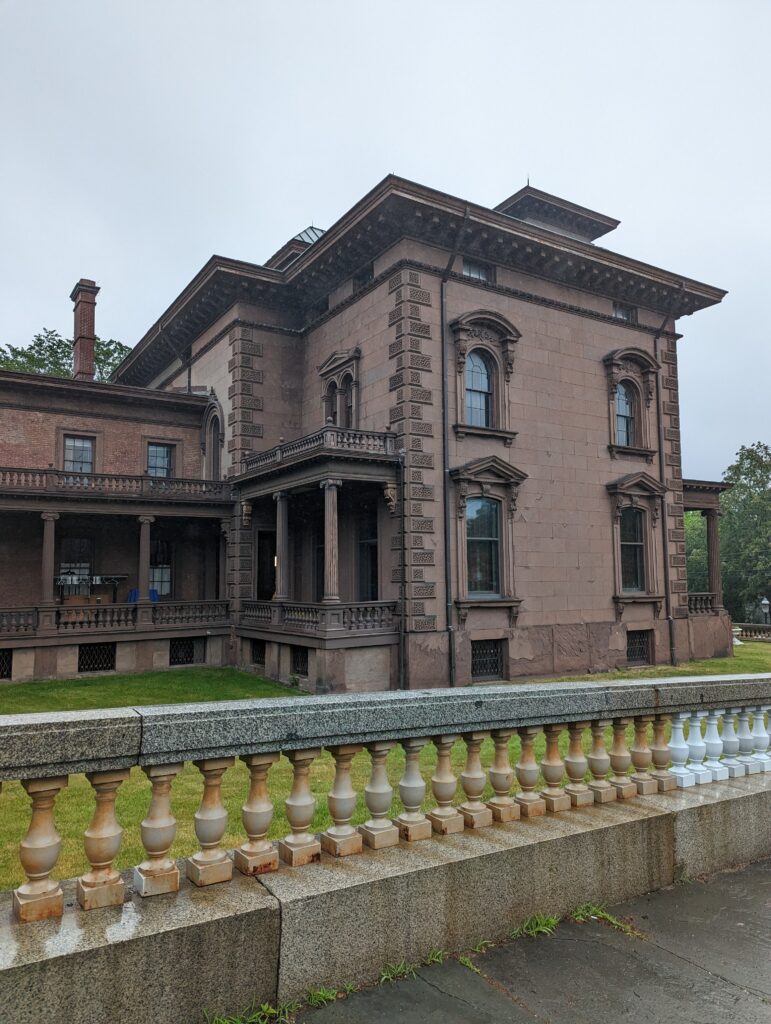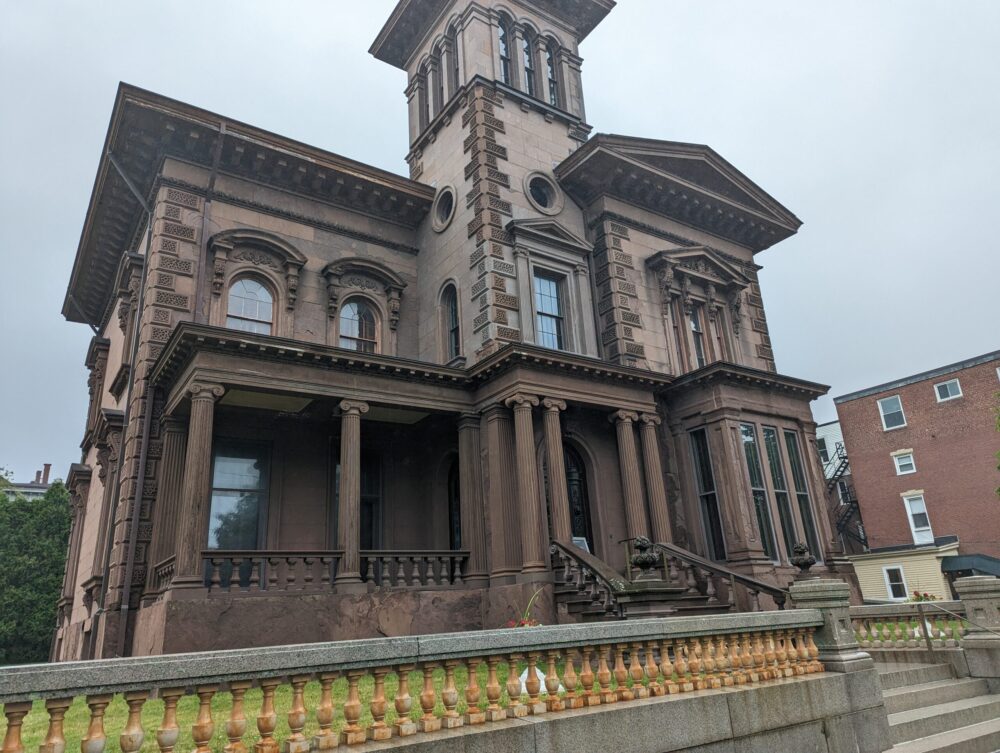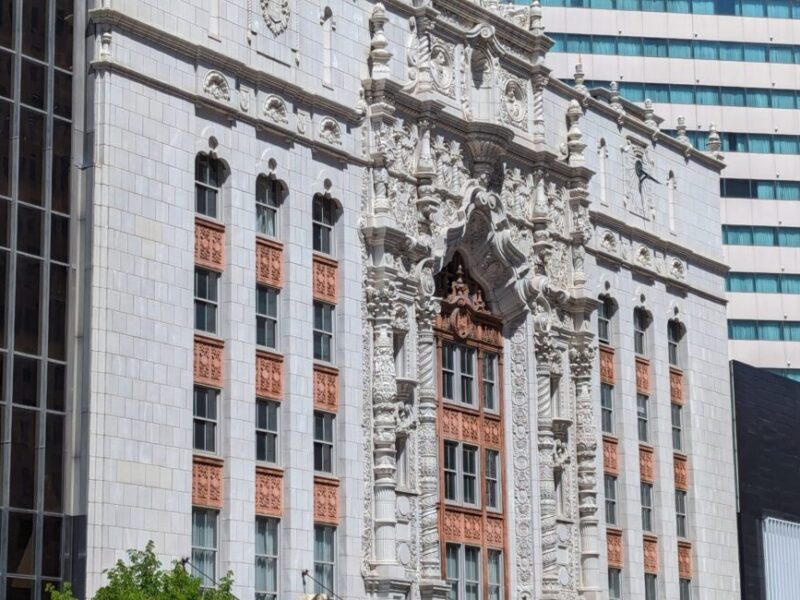I ran across this beauty while strolling around Portland, Maine. I love Victorian homes in general, and Italianates are probably my favorite. Although a proper Queen Anne will hold my attention just as long.
Here are some things specific to the style that may be of interest:
The Italianate style emerged in the 19th century as a popular architectural movement inspired by the villas and rural farmhouses of Italy. It gained prominence particularly in the United States, Britain, and Australia, influencing both residential and commercial architecture. Here’s a discussion of its key characteristics:
1. Influence of Italian Renaissance: The Italianate style drew heavily from the architecture of the Italian Renaissance period, especially the villas of Tuscany and the rural farmhouses of Italy. Architects and designers were inspired by the symmetry, proportions, and decorative elements of these structures.
2. Symmetry and Proportion: Italianate buildings are often characterized by symmetrical facades and balanced proportions. They typically feature a rectangular shape with a prominent central entrance, flanked by evenly spaced windows. The overall design emphasizes harmony and balance.
3. Low-Pitched Roof: One of the distinctive features of Italianate architecture is the low-pitched roof, often with wide eaves supported by decorative brackets or corbels. These roofs sometimes feature a cupola or a square tower with a hipped roof, adding to the grandeur of the building.
4. Eaves and Cornices: Italianate buildings commonly have wide overhanging eaves supported by decorative brackets. The cornices are often elaborately decorated with moldings, dentils, or other ornamental elements, adding richness to the roofline.
5. Arched Windows and Doors: Arched windows and doors are another hallmark of Italianate style. These openings are often tall and narrow, with elaborate surrounds featuring decorative keystones and pilasters. The use of arched openings adds a sense of elegance and sophistication to the facade.
6. Stucco or Masonry Construction: Italianate buildings are typically constructed using masonry materials such as brick or stone. Stucco is often applied to the exterior walls, creating a smooth finish that resembles the plastered walls of Italian villas. The use of masonry gives Italianate buildings a sense of solidity and permanence.
7. Belvederes and Loggias: Some Italianate buildings feature belvederes or rooftop observation platforms, providing panoramic views of the surrounding landscape. Loggias, or covered galleries with open arches, are also common features, adding to the Mediterranean charm of the architecture.
8. Ornamental Details: Italianate buildings are known for their rich ornamentation and decorative details. These may include carved stone or woodwork, wrought iron balconies and railings, elaborate moldings, and decorative motifs inspired by classical architecture.
Overall, the Italianate style is characterized by its romanticized interpretation of Italian architecture, combining classical elements with a sense of rustic charm and elegance. It remains a popular architectural style, particularly in historic neighborhoods and affluent residential areas.

This hope in particular is known as the Victoria Mansion, but properly named the “Morse Libby House”, and is a historical landmark in Portland, Maine. Here’s a discussion of its significance and architectural features:
1. Historical Context:
- The Morse-Libby House was built between 1858 and 1860 for Ruggles Sylvester Morse, a prosperous Maine businessman, and his wife Olive. It was designed as a summer residence for the family.
- The house is significant for its association with the wealthy merchant class of the mid-19th century and reflects the opulence and grandeur of the Victorian era.
2. Architectural Style:
- The Morse-Libby House is a stunning example of the Italianate villa style, popular during the mid-19th century in America.
- It features a symmetrical facade with a central tower, elaborate decorative details, and a variety of architectural elements characteristic of the Italianate style.
3. Exterior Features:
- The exterior of the house is characterized by its red brick construction, complemented by sandstone trimmings.
- The central tower, rising above the main entrance, is topped with a belvedere offering views of the surrounding area.
- The house’s windows are adorned with intricate wrought-iron balconies and hood molds, adding to its visual appeal.
4. Interior Design:
- The interior of the Morse-Libby House is renowned for its lavish and ornate decorations, showcasing the height of Victorian-era design.
- Each room is meticulously furnished with period furniture, rich fabrics, and elaborate wallpapers, reflecting the tastes and aspirations of the wealthy elite of the time.
- The house features intricate plasterwork ceilings, hand-painted murals, and elaborate woodwork, all contributing to its sumptuous ambiance.
5. Preservation and Legacy:
- In 1941, the Morse-Libby House was opened to the public as a museum, allowing visitors to experience the grandeur of Victorian-era living.
- The house has undergone extensive restoration efforts to preserve its original features and architectural integrity.
- Today, the Morse-Libby House is a designated National Historic Landmark and is considered one of the finest examples of residential architecture from the mid-19th century in the United States.
6. Visitor Experience:
- Visitors to the Morse-Libby House can take guided tours of the interior, exploring its rich history and exquisite craftsmanship.
- Special events, educational programs, and exhibits are often hosted at the mansion, providing opportunities for visitors to engage with its heritage and significance.
Overall, the Morse-Libby House stands as a testament to the wealth, taste, and architectural sophistication of 19th-century America, offering visitors a glimpse into the opulent lifestyle of its original occupants.


